
The 2016 presidential election cycle has experienced a wave of publicity regarding potential election rigging; while out and out election fraud is not common, changes to state laws since the 2010 election have made it harder for voters to cast their ballot. A study by the Brennan Center for Justice at New York University School of Law breaks down the impact of these changes on the voting public.
Let’s start by looking at a bit of history. In 2013, the Supreme Court’s Shelby County v. Holder decision, which originated in Alabama, struck down a key provision of the Voting Rights Act of 1965 which was signed into law to protect against discriminatory voting practices. In Shelby County v. Holder, the pre-clearance section of the act was struck down as unconstitutional. This means that the states of Alabama, Alaska, Arizona, Georgia, Mississippi, South Carolina, Texas and Virginia do not have to seek federal approval before making changes to their voting laws. While some states have used this opportunity to implement new voting laws that benefit voters, some states have introduced laws that make it more difficult for voters as follows:
1.) States with new restrictive voting laws that have been in effect since 2010:
2.) States with new restrictive voting laws that are in effect for the first time in 2016:
Let’s look at some examples from the second map, showing new measures that are in effect for the first time in 2016:
1.) Alabama – photo ID is required to vote. Here is a list of acceptable photo identification and what happens if the voter does not have a valid photo ID:
Additionally, a law has been passed that requires voters to provide documentary proof of citizenship when they register to vote. This law was blocked by a federal appeals court on September 9, 2016 but is subject to ongoing litigation.
2.) Indiana – voters may have to provide proof of identification to additional party-nominated election officers, a duplication of the former voter identification requirement.
3.) Kansas – In 2012, laws were changed requiring photo ID to vote. In 2016, laws were changed; documentary proof of citizenship is now required to register using the state registration form. Here is a list of acceptable photo identification:
Note that persons aged 65 and older may use expired ID documents and do not apply to military and overseas citizens using the federal Uniformed and Overseas Citizens Absentee Voting Act. As well, any person whose religious beliefs prohibit the use of photo identification can fill out this form for an exemption:
4.) Mississippi – For the first time in 2016, photo identification is required to vote. Here is a listing of acceptable forms of photo ID:
If a voter does not have any of these forms of photo ID, a free Mississippi Voter Identification Card will be supplied by any Circuit Clerk’s Office within the state.
5.) Nebraska – In 2016, the early voting period was reduced from a minimum of 35 days to no more than 30 days.
6.) New Hampshire – For the first time in 2016, photo ID is required to vote. Here is listing of acceptable forms of photo identification:
If voters do not have acceptable identification, they will be photographed at the polls and the photograph will be attached to an affidavit.
7.) South Carolina – For the first time in 2016, photo ID is required to vote, however, an alternative is available for those who have a reasonable impediment that prevents them from obtaining photo ID. Interestingly, if you are registered to vote but don’t have a photo ID, you can go to your county voter registration and elections office, provide your date of birth and the last four digits of your Social Security Number and have your photo taken. South Carolina even provides guidelines outlining the attire and appearance guidelines for these photos.
I think that you have the general idea with these seven examples of changes implemented for the 2016 election. The changes made for the 2012 election tended to be more somewhat more invasive than simply requiring identification as shown in these examples:
1.) Florida – cut early voting, curbed voter registration drives, made it more difficult for people with past criminal records to have their voting rights restored.
2.) Georgia – reduced early voting period from 45 days to 21 days and cut early voting the weekend prior to election day.
3.) Illinois – curbed voter registration drives.
4.) Iowa – made it more difficult for people with past criminal records to have their voting rights restored.
5.) South Dakota – made it more difficult for people with past criminal records to have their voting rights restored.
In the cases of Florida, Iowa and South Dakota, the legal moves against people with criminal records means that citizens with felony convictions are more or less permanently disenfranchised.
Fortunately, many of the attempts by states to make it more difficult to vote have been met with pushback from the court system with a complete rollback of some restrictions and a softening of others. Interestingly, there is a relationship between ethnicity/race and voter suppression; some of the restrictions have been implanted in the states with the highest African-American turnout during the 2008 election and those with the highest Hispanic population growth between 2000 and 2010 as shown on this map:
I have found this process of disenfranchisement with quite a bit of interest over the past six years given that the United States likes to promote itself to the rest of the world as “the” model for democracy. While there are some very interesting examples of voter fraud that have resulted in convictions, as a percentage of total votes cast in elections of all types (i.e. federal, state, local), the number of fraudulent votes cast appears to be quite small. As we can see from the study by the Brennan Center for Justice, America’s democracy is under siege as some states have implemented laws that either make it more difficult to vote or impossible to vote under some circumstances, a process that seems to show that democracy is heading in the wrong direction.
Click HERE to read more.

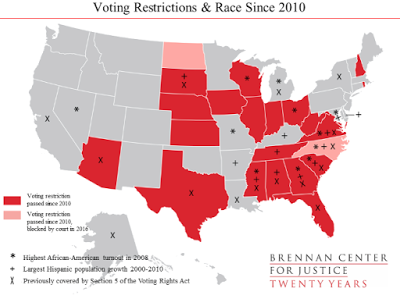
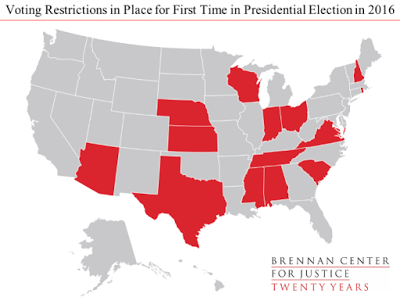
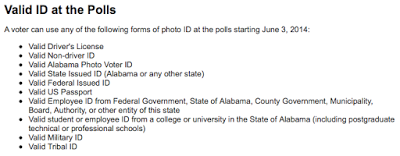

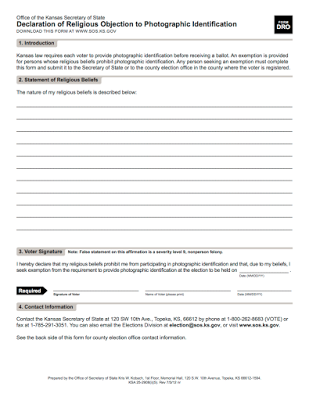
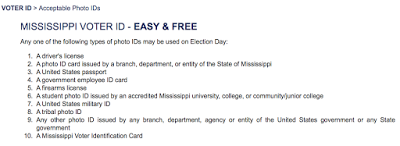
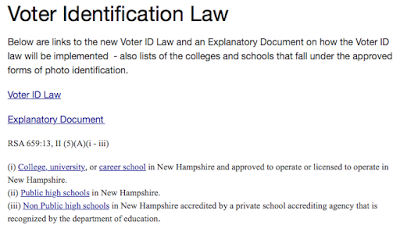
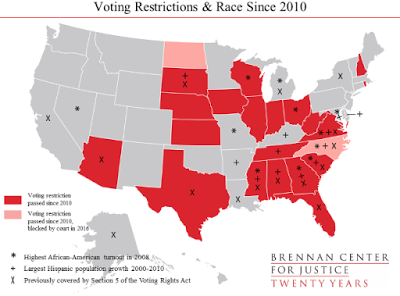
Be the first to comment